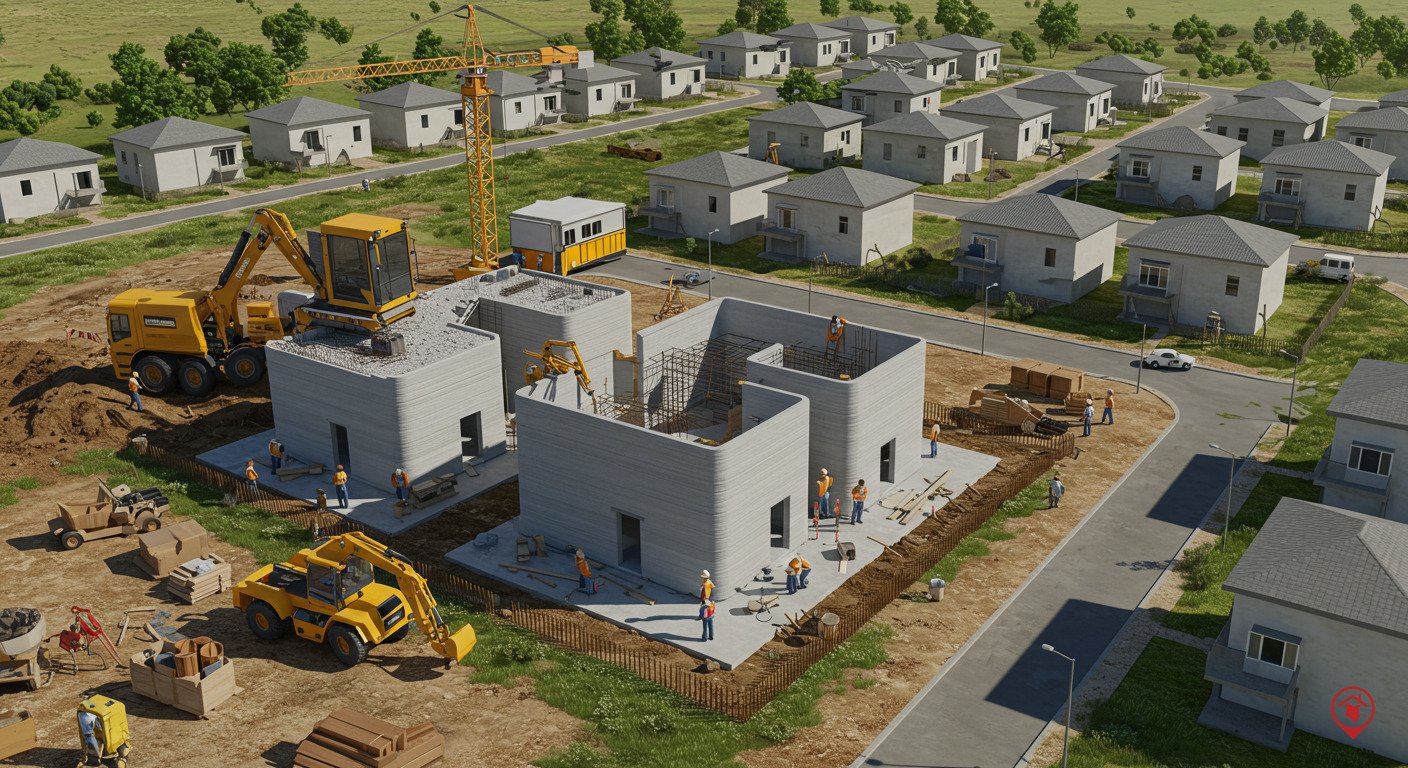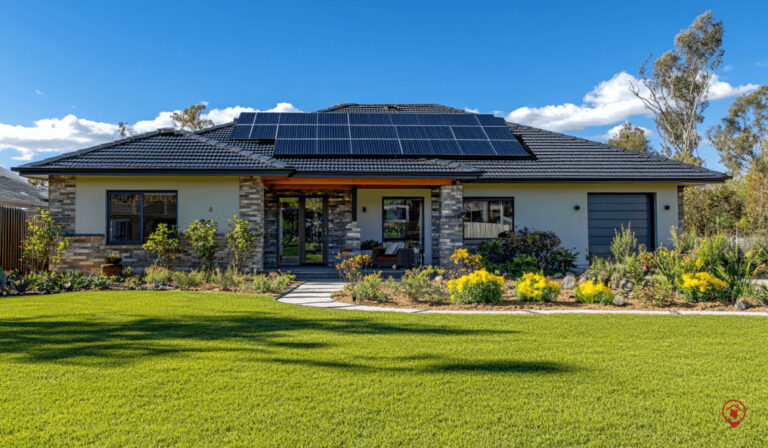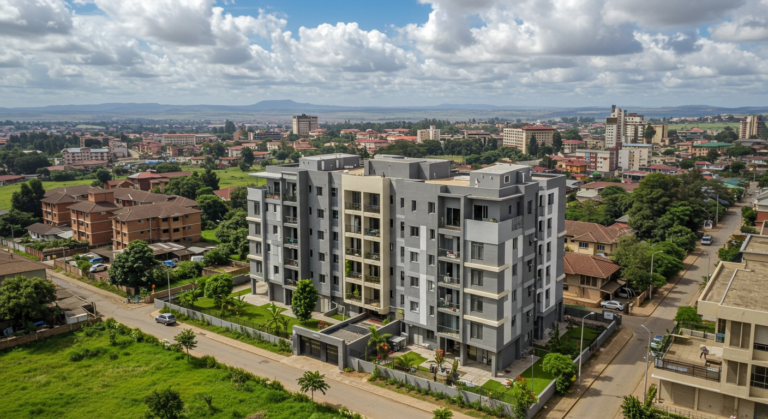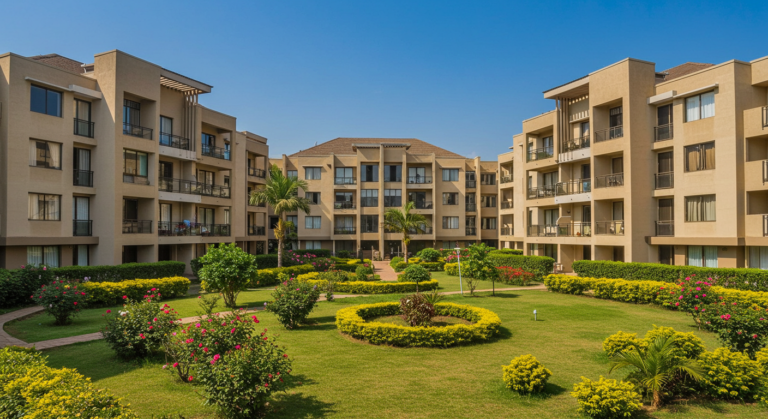Would You Live in a 3D-Printed House in Kenya?
Year after year, century after century, houses have evolved, taking on different shapes, sizes, and being built with different materials. Long ago, people lived in caves and temporary shelters. Over time, this shifted to more permanent homes made of mud, wood, and eventually stone.
Today, we stand at yet another turning point in construction. From traditional bricks and mortar, technology is pushing the boundaries of what’s possible.
The latest game-changer? 3D-printed houses.
Once considered futuristic, these homes are now slowly becoming a reality in different parts of the world and yes, even here in Kenya. But the big question is: Would you live in one?
READ ALSO: The Future of 3D-Printed Homes in Kenya: A Revolution in Housing?
What Exactly Is a 3D-Printed House?
A 3D-printed house is built using advanced technology where a large, specialised 3D printer “prints” the structure of the home layer by layer. Unlike the small printer on your desk, this industrial machine uses a thick, cement-like mixture instead of ink or plastic.
The process starts with a digital blueprint of the house. Once the design is ready, the printer follows the digital model, automatically laying down layers of material to create the walls and structural parts. Everything, from the outer walls to internal partitions can be printed with high precision.
In many cases, the house’s structure can be completed in just a few days, a huge difference compared to the weeks or months it takes to build traditionally.
Why Are People Talking About 3D-Printed Homes?
This technology is making headlines globally, and here’s why it’s getting serious attention:
Faster Construction
Traditional construction in Kenya can take several months due to labor shortages, weather delays, and approval processes. In contrast, 3D-printed homes can be completed in days, dramatically reducing waiting times for homeowners.
Potentially Lower Costs
3D printing uses fewer workers and less material, cutting down labor and waste costs. Although the initial investment in the printer itself is high, the long-term savings on large-scale projects could make homes more affordable in the future.
Sustainability and Less Waste
The process is highly precise, producing minimal construction waste. Some 3D-printed homes even use recycled materials or eco-friendly cement alternatives.
Design Freedom
Curved walls, custom shapes, and modern designs that would normally cost a fortune to build can be easily achieved with 3D printing.
Could This Technology Work in Kenya?
Here’s where it gets interesting for Kenya:
- Affordable Housing Demand: Kenya faces a huge housing shortage—estimated at over 2 million units—especially for low- and middle-income earners. 3D-printed homes could be a creative solution to bridge this gap, particularly for affordable housing projects.
- Urbanisation: With more people moving to urban areas like Nairobi, Mombasa, and Kisumu, faster and more efficient building methods are urgently needed.
- Innovations Already Happening: Countries like Mexico and the U.S. have already built 3D-printed housing estates for low-income families. Some African nations, like Malawi, have also experimented with 3D-printed schools and homes.
Challenges to Overcome:
- High Initial Costs: The machines are expensive and may require importation.
- Skilled Labor: Kenya lacks widespread expertise in operating and maintaining this technology.
- Regulations: Current building codes may not yet recognize 3D-printed structures, making approvals tricky.
Conclusion: Would You Live in One?
So, would you live in a 3D-printed house in Kenya?
The idea may sound futuristic, but with the right investment and policies, this technology could change how homes are built—faster, cheaper, and more sustainably.
And yes, we know what you might be thinking; what about the quality? That’s a valid question. Many 3D-printed homes are designed to meet strict safety and durability standards, often proving to be just as strong, if not stronger, than traditional houses. In some cases, they’re even better at withstanding harsh weather and pests.
It may take a few more years before you see 3D-printed homes widely available locally, but make no mistake, the future of housing is shifting rapidly.








